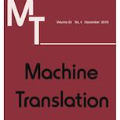The conversion of content from one language to another utilizing a computer system is known as Machine Translation (MT). Various techniques have come up to ensure effective translations that retain the contextual and lexical interpretation of the source language. End-to-end Neural Machine Translation (NMT) is a popular technique and it is now widely used in real-world MT systems. Massive amounts of parallel datasets (sentences in one language alongside translations in another) are required for MT systems. These datasets are crucial for an MT system to learn linguistic structures and patterns of both languages during the training phase. One such dataset is Samanantar, the largest publicly accessible parallel dataset for Indian languages (ILs). Since the corpus has been gathered from various sources, it contains many incorrect translations. Hence, the MT systems built using this dataset cannot perform to their usual potential. In this paper, we propose an algorithm to remove mistranslations from the training corpus and evaluate its performance and efficiency. Two Indic languages (ILs), namely, Hindi (HIN) and Odia (ODI) are chosen for the experiment. A baseline NMT system is built for these two ILs, and the effect of different dataset sizes is also investigated. The quality of the translations in the experiment is evaluated using standard metrics such as BLEU, METEOR, and RIBES. From the results, it is observed that removing the incorrect translation from the dataset makes the translation quality better. It is also noticed that, despite the fact that the ILs-English and English-ILs systems are trained using the same corpus, ILs-English works more effectively across all the evaluation metrics.
翻译:暂无翻译



